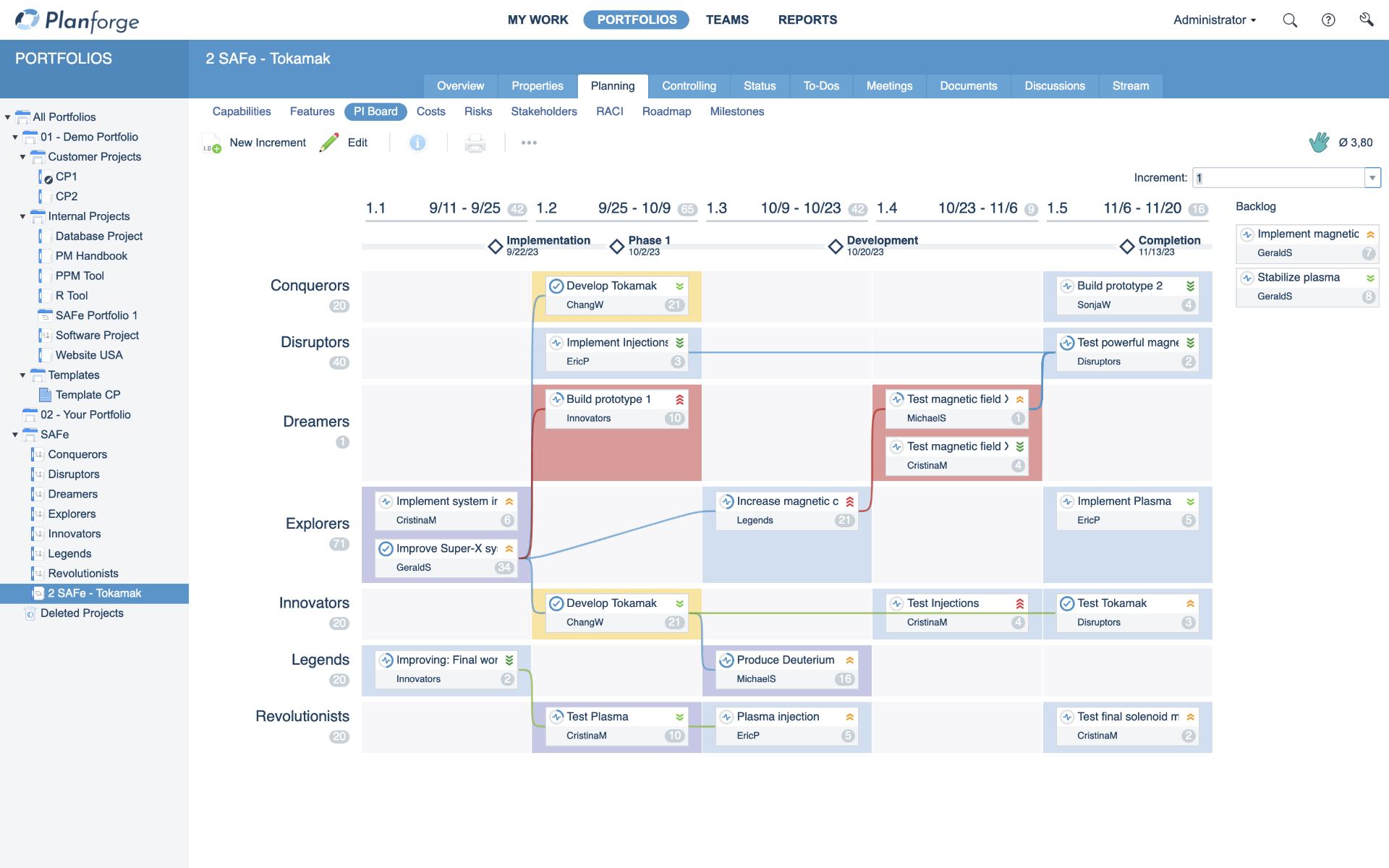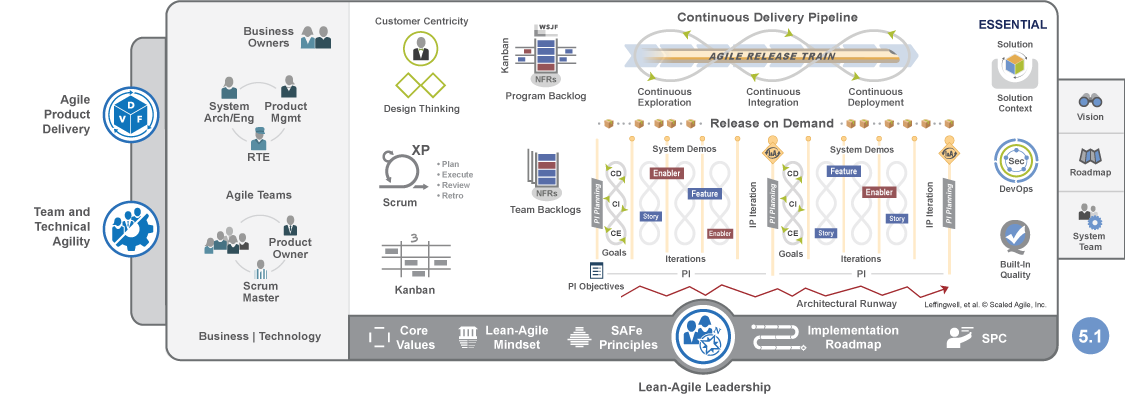What is the SAFe Framework?
Simply explained, SAFe®, or the Scaled Agile Framework, is a collection of best practices and artifacts for efficiently building and delivering products and services based on lean-agile concepts.
Initially designed for software projects, it is also increasingly being used for complex development projects that share similar characteristics.
The main goal of SAFe is to help product development teams work more structured and continuously and execute releases more predictably.
The Scaled Agile Framework is customer-centric, enables effective product development, and allocates resources like agile teams efficiently. Innovativeness and quick reaction to market changes are the focus of this process management model.
 Figure 1: SAFe Feature: PI-Planning Board in Planforge
Figure 1: SAFe Feature: PI-Planning Board in Planforge
SAFe Is "Not Project Management"
One of the leading SAFe consultants in Austria, Axel Straschil, recently dropped an interesting line:
"SAFe is not project management."
Although typically seen as part of project and portfolio management (PPM), this framework is entirely different from traditional and hybrid PPM.
SAFe is a process management model with no finish dates and therefore cannot be a project or program by classical definition. Speaking of SAFe, project management is not the right term to use.
And there is more to it: SAFe intentionally skips the project kick-off/teardown concept to save resources. Naturally, this only works if the overall environment and the project team stays the same.
This already gives us a good idea about the Scaled Agile Framework: It is an efficient, agile way to deliver release-driven, complex, and high-quality products. Moreover, SAFe is aimed at enterprises with typically 100+ engineers/developers.
4 Steps of Agile Transformation in Your Company:
Learn from the Expert
Essential SAFe
SAFe is a modular framework that can be deployed in multiple configurations or stages. The initial stage is also the foundation for all other SAFe configurations and is called Essential SAFe. This configuration is the entry-level variant that allows enterprises to implement the framework quickly. For now, we will focus solely on Essential SAFe, as this configuration is by far the most widely deployed.
The idea of Essential SAFe is that business managers and engineers work together to define requirements in a way that they bring actual business value to the customer or end-user.
The image below shows the process management model with all its elements.
 Figure 2: Overview Essential SAFe (© Scaled Agile, Inc.)
Figure 2: Overview Essential SAFe (© Scaled Agile, Inc.)
Essential SAFe focuses on developing and delivering a single "Solution" based on a so-called Agile Release Train (ART). An ART is divided into Program Increments (PI) that are between 8-12 weeks in length and form the temporal component in SAFe. During this time, multiple agile teams of an ART deliver incremental value for the "Solution." At the beginning of each Program Increment, a PI Planning occurs, where all agile teams of an ART come together and plan the next Program Increment together.
Note that you will find these characteristics in all other SAFe configurations as well.
SAFe vs. traditional and hybrid PPM — Stay up to Date
As we have already learned: SAFe is entirely different from traditional and hybrid PPM. The agile SAFe framework offers a solution to integrate agility into your business.
5 Features That Make Essential SAFe Unique: Read now.







 Jira
Jira
 Confluence
Confluence
 SAP
SAP
 API
API



